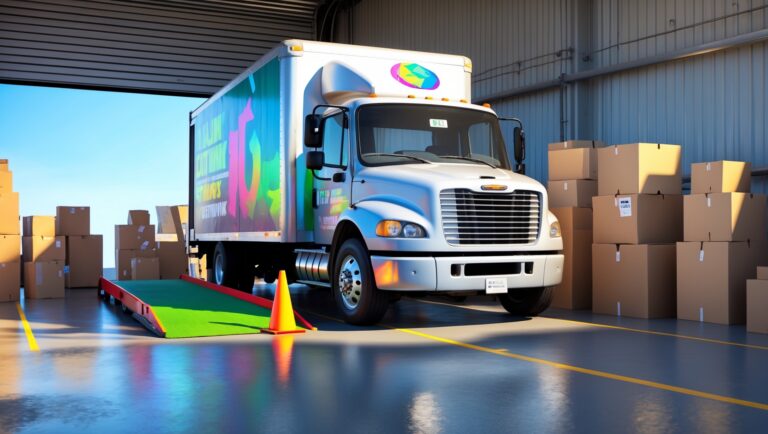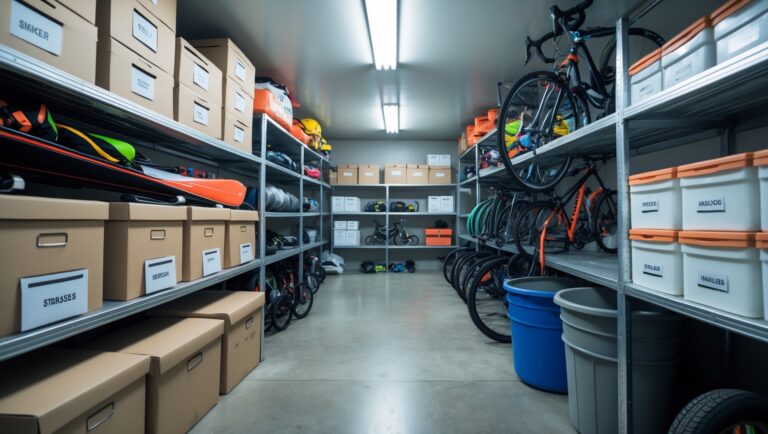Storage Facility Lighting: Choosing, Upgrading, and Maintaining the Best Solutions
Introduction: The Critical Role of Lighting in Storage Facilities
Lighting is an often-overlooked yet critical aspect of any storage facility, whether you’re running a self-storage business, operating a warehouse, or managing a climate-controlled facility. Many owners focus on security systems, pest control, and insurance, but the quality of your lighting can influence everything from customer safety to your monthly energy bill and overall business reputation. Well-planned lighting enhances security, deters crime, boosts tenant satisfaction, and even supports your marketing efforts. Poor or outdated lighting, on the other hand, can lead to vandalism, accidents, higher utility expenses, and negative customer reviews. With rapid advancements in lighting technology—especially LED solutions—the opportunities to improve your facility’s illumination have never been greater. This guide will walk you through the essentials of choosing the right lighting, upgrading from legacy systems, and maintaining your setup for maximum efficiency, safety, and customer appeal.
Why Lighting Matters: Beyond Visibility
Security and Safety
Effective lighting is one of the first lines of defense in storage facility security. Criminals are less likely to target well-lit properties, and customers feel safer accessing their units at any hour. Properly illuminated walkways, driveways, and access points reduce the risk of slips, trips, and falls, helping you avoid costly liability claims.
Customer Experience and Marketing
First impressions matter. A well-lit facility appears cleaner, more modern, and more trustworthy to potential renters. Photos of illuminated, organized aisles are more likely to convert website visitors into paying customers. Nighttime curb appeal can set your property apart in a crowded market.
Energy Efficiency and Environmental Impact
Lighting is often one of the largest ongoing expenses in a storage facility’s operating budget. With the rise of high-efficiency LEDs and smart controls, it’s now possible to dramatically reduce energy consumption and maintenance costs—while shrinking your facility’s environmental footprint.
Types of Storage Facility Lighting Solutions
Legacy Lighting: Fluorescent and HID
Many older storage facilities still rely on fluorescent tubes or high-intensity discharge (HID) lamps such as metal halide or sodium vapor. While these were once industry standards, they present significant drawbacks: slow warm-up times, flicker, inconsistent color, high energy consumption, and frequent bulb replacement.
LED Lighting: The Modern Standard
Light Emitting Diode (LED) technology is now the gold standard for both new construction and retrofits. LEDs offer:
- Energy savings up to 75% compared to legacy lighting
- Consistent, high-quality illumination
- Long lifespan (often 50,000+ hours)
- Instant-on capability (no warm-up)
- Lower maintenance requirements
- Wide range of color temperatures and fixture types
Smart Lighting Controls
Modern lighting solutions often incorporate smart controls such as motion sensors, daylight harvesting, timers, and programmable zones. These features maximize efficiency by ensuring lights are only on when needed, and in the right places.
Planning Your Lighting Upgrade
Assessing Your Current System
Before investing in new lighting, conduct a thorough audit of your current system. Document:
- All fixture locations and types
- Areas with insufficient or excessive illumination
- Fixture ages and maintenance history
- Energy usage and utility costs
- Customer feedback about lighting
Use a light meter to measure actual brightness (measured in lumens or foot-candles) in key areas. Compare readings to industry recommendations—typically 10-30 foot-candles for walkways and access aisles, and 5-10 for general parking areas.
Identifying Lighting Priorities
Focus first on areas where lighting most directly impacts safety and security:
- Main entrances and exits
- Driveways and vehicle circulation paths
- Access control points (keypads, gates)
- Stairwells and elevators
- Walkways and corridors between units
Don’t neglect secondary zones such as dumpster pads, loading docks, and signage areas—well-lit signage can boost visibility from the street and attract drive-by traffic.
Choosing the Right Fixtures
The best fixture type depends on the area being illuminated:
- Wall Packs: Durable, weatherproof fixtures for building exteriors
- Canopy Lights: Ideal for covered drive-throughs or entry areas
- Floodlights: Broad coverage for large parking lots or exterior perimeters
- Linear Fixtures: Perfect for interior aisles and corridors
- Bollard Lights: Low-mounted for walkways and landscaping
Look for fixtures with the right IP (Ingress Protection) rating for outdoor use, tamper-resistant housings, and integrated photocells or motion sensors for added efficiency.
Installation Best Practices
Professional vs. DIY Installation
While some lighting upgrades (such as swapping bulbs for compatible LEDs) can be handled by in-house staff, full fixture replacements or new installations are best left to licensed electricians. This ensures compliance with local codes and minimizes fire and shock risks.
Fixture Placement and Spacing
Uniform, shadow-free illumination is essential for both safety and security. Follow these guidelines:
- Stagger fixtures along long corridors to avoid dark spots
- Place wall packs at regular intervals along building exteriors
- Position floodlights to overlap beams and eliminate shadows in parking areas
- Use low-glare fixtures to avoid blinding drivers or customers
Consult manufacturer photometric diagrams to optimize placement and minimize wasted light.
Integrating with Security Systems
Pair lighting with security cameras for maximum deterrence and forensic value. Cameras perform best under consistent, high-quality illumination—avoid fixtures that create hot spots or deep shadows. Consider linking motion-activated lighting with camera recording triggers.
Maintenance Strategies for Reliable Lighting
Routine Inspections
Establish a regular inspection schedule—at least quarterly—to check all fixtures for:
- Burned-out bulbs or failed LEDs
- Broken lenses, housings, or vandalism
- Water infiltration or corrosion in outdoor fixtures
- Sensor and control functionality
Keep a maintenance log to track issues and replacements. Prompt repairs prevent small problems from escalating and help maintain a positive image.
Cleaning and Environment Considerations
Dirt, dust, and cobwebs can significantly reduce light output over time. Clean lenses and housings at least twice a year. For outdoor fixtures, trim vegetation that could block light or harbor pests. In snowy climates, ensure fixtures are high enough to remain effective above snow accumulation.
Upgrading Controls and Sensors
Even if your fixtures are relatively new, consider retrofitting older systems with motion detectors, smart controllers, or WiFi-enabled management platforms. These upgrades can pay for themselves quickly through energy savings and extended bulb life.
Lighting and Compliance: Meeting Local and National Standards
Code Requirements
Lighting must comply with local, state, and national building codes. Common requirements cover:
- Minimum light levels in public and emergency areas
- Emergency backup lighting for exits and stairwells
- Dark-sky ordinances to limit light pollution
- ADA (Americans with Disabilities Act) accessibility for controls
Work with licensed professionals familiar with the codes in your jurisdiction to avoid costly violations.
Rebates and Incentives
Many utility companies and local governments offer rebates or tax incentives for upgrading to high-efficiency lighting. Check with your energy provider or local chamber of commerce for current programs. Document all upgrades and retain receipts to qualify for financial incentives.
Case Study: Transforming a Storage Facility with Modern Lighting
Consider the example of “Sunset Secure Storage,” a mid-sized self-storage facility in the Midwest. Facing rising energy bills and customer complaints about dark corners and flickering lights, the owners decided to pursue a lighting overhaul. Working with a lighting consultant, they:
- Replaced all exterior HID fixtures with LED wall packs and floodlights
- Installed motion-activated lights in low-traffic corridors
- Added photocell sensors to all outdoor lighting for dusk-to-dawn control
- Upgraded interior hallway lighting to high-output linear LED fixtures
The results were immediate: energy consumption dropped by 58%, customer reviews praised the improved safety, and the facility qualified for a $7,500 energy efficiency rebate. Within two years, the project paid for itself through energy and maintenance savings, and occupancy rates rose by 10%.
Common Lighting Mistakes to Avoid
- Over-lighting: Excessive brightness wastes energy and can create glare, making surveillance more difficult.
- Neglecting motion sensors: Failing to use controls means lights stay on when not needed, driving up costs.
- Ignoring color temperature: Inconsistent or harsh color temperatures can make spaces feel cold or uninviting. Stick to consistent, neutral white (4000K–5000K).
- Forgetting emergency lighting: Every facility needs reliable battery-backed emergency lights for code compliance and tenant safety.
- Delaying maintenance: Burned-out or broken lights undermine security and can harm your reputation.
Conclusion: Lighting as a Competitive Advantage
Lighting should never be an afterthought for storage facility owners and managers. In today’s highly competitive market, the right lighting strategy does more than just illuminate pathways—it enhances security, reduces liability, improves customer satisfaction, and lowers operational costs. Upgrading from outdated, inefficient systems to modern LED solutions—supplemented by smart controls and regular maintenance—can produce rapid returns on investment and long-term peace of mind.
As customers grow more discerning and safety-conscious, facilities with bright, inviting, and well-maintained lighting have a clear edge. These improvements are visible not just to your tenants but also to potential renters driving by or browsing your website. Furthermore, the operational benefits—lower energy bills, fewer emergency repairs, and compliance with local codes—free up time and resources to focus on growing your business.
Don’t wait until a security incident or a negative review forces your hand. Proactive lighting upgrades and diligent maintenance signal to customers that you care about their experience and safety. Partner with experienced lighting professionals, take advantage of available rebates, and make lighting a cornerstone of your facility’s value proposition. In the end, a brighter facility is a safer, more successful one.






